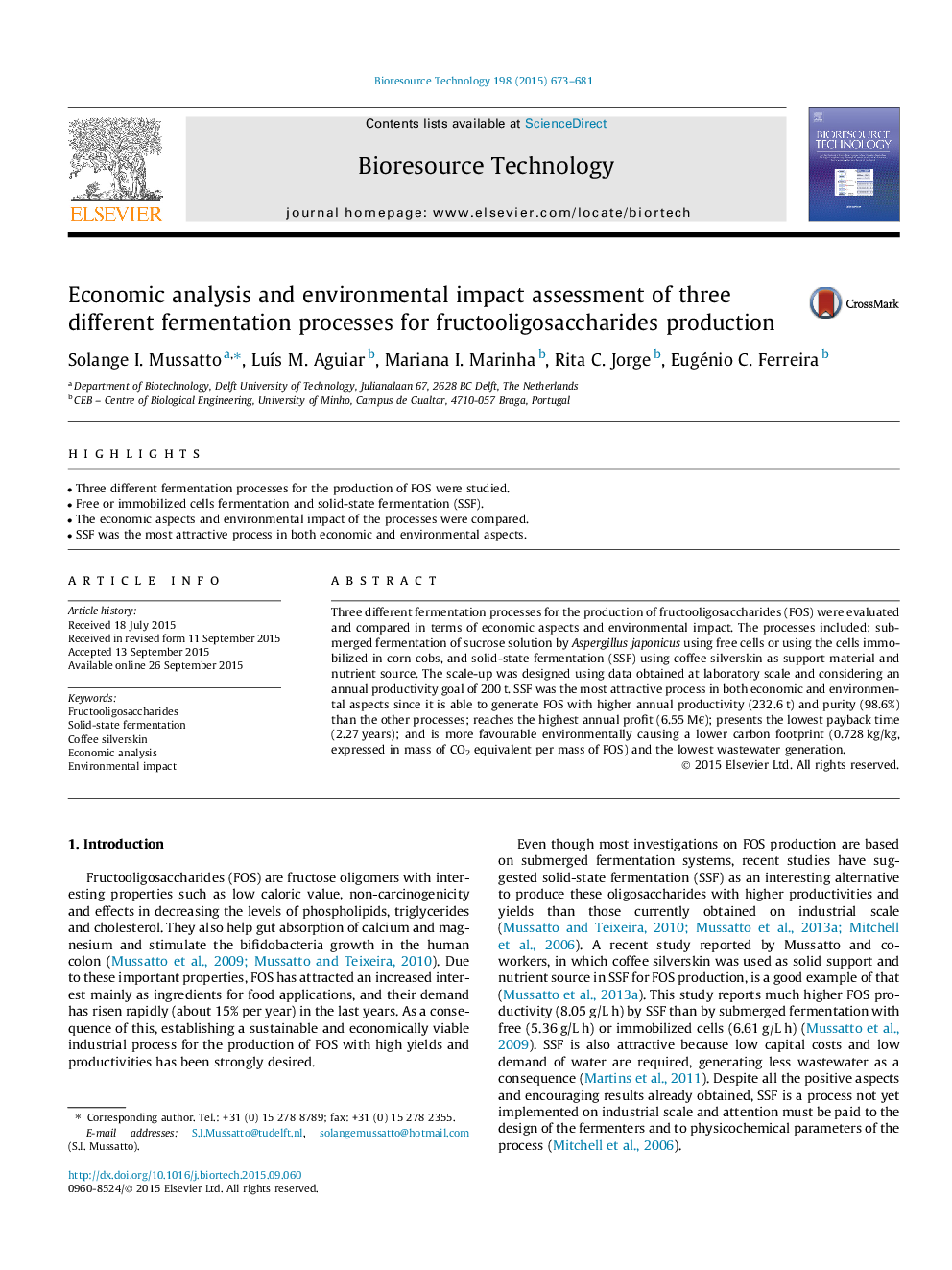| Article ID | Journal | Published Year | Pages | File Type |
|---|---|---|---|---|
| 679496 | Bioresource Technology | 2015 | 9 Pages |
•Three different fermentation processes for the production of FOS were studied.•Free or immobilized cells fermentation and solid-state fermentation (SSF).•The economic aspects and environmental impact of the processes were compared.•SSF was the most attractive process in both economic and environmental aspects.
Three different fermentation processes for the production of fructooligosaccharides (FOS) were evaluated and compared in terms of economic aspects and environmental impact. The processes included: submerged fermentation of sucrose solution by Aspergillus japonicus using free cells or using the cells immobilized in corn cobs, and solid-state fermentation (SSF) using coffee silverskin as support material and nutrient source. The scale-up was designed using data obtained at laboratory scale and considering an annual productivity goal of 200 t. SSF was the most attractive process in both economic and environmental aspects since it is able to generate FOS with higher annual productivity (232.6 t) and purity (98.6%) than the other processes; reaches the highest annual profit (6.55 M€); presents the lowest payback time (2.27 years); and is more favourable environmentally causing a lower carbon footprint (0.728 kg/kg, expressed in mass of CO2 equivalent per mass of FOS) and the lowest wastewater generation.
